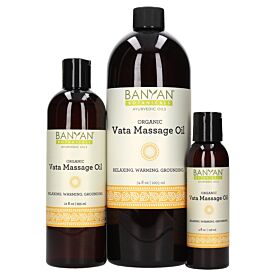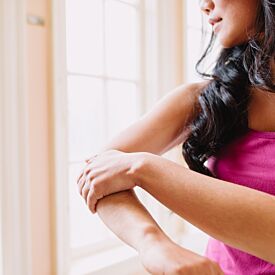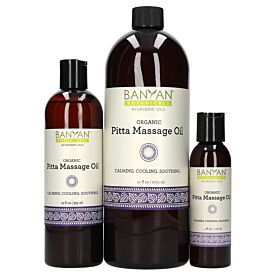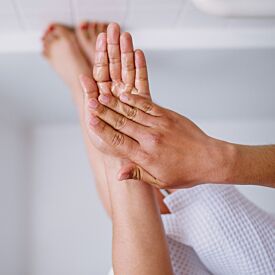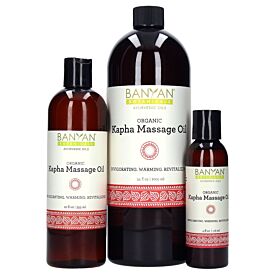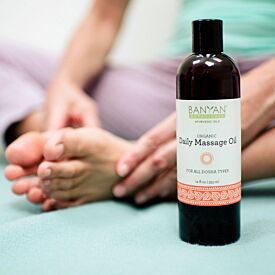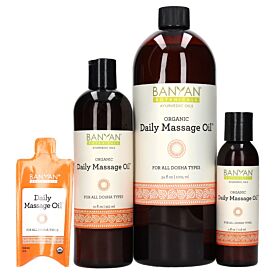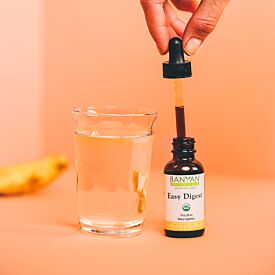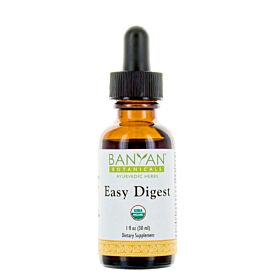When Not to Do Abhyanga & Why
Our morning and evening routines act as anchors in our busy lives. While a self-care routine can serve as a foundation for our health, an Ayurvedic routine can have many moving parts. Generally speaking, these components can be beneficial to all individuals with some simple modifications. Still, there are times when we should reel back or omit participation to prevent greater turmoil. Knowing “when to hold ‘em” and “when to fold ‘em,” so to speak, gives even greater empowerment to being guardian of one’s own health.
Among the many beneficial elements of our self-care regimen, abhyanga stands out as having some of the most profound effects. Abhyanga is the practice of applying warm oil to one’s body through a gentle and methodical massage, often with doshic-specific oil, prior to bath or shower. From the most superficial to the deepest, the oil nourishes all tissues while simultaneously giving roots and direction to the vata dosha. Abhyanga has the ability to provide calm in times that are hectic and security in moments of anxiety or vulnerability. In fact, even the translation of the word can make you feel hopeful for better days. Snehana, the Sanskrit word for oil, also means love. Abhyanga is considered to be one of the greatest acts of self-love.
But sometimes, even love isn’t appropriate.
It hardly seems possible that there would be a time when abhyanga would not come to our aid, but it is indeed true. The same effects of abhyanga that make us feel wonderful can also act against us if the circumstances allow. Certainly, we should not practice abhyanga if we repeatedly feel poorly afterward, yet this cannot be the only pointer to contraindication. Review the following list of times not to do abhyanga and why.

5 Times to Skip Abhyanga
-
After eating or in cases of severe indigestion or constipation. As you massage oil into your skin, moving from extremities toward your heart, you are helping to correct and re-direct all five vayus, or movements of prana. In some scenarios, we want more emphasis on a specific vayu. For instance, after eating, it is helpful to direct energy to samana vayu, the linear movement around the naval that helps us digest and assimilate our food. Likewise, if we are constipated, it is in our best interest to work towards a better functioning apana vayu or movement that takes things down and out. Increasing our circulation with massage is likely to do more harm than good in the above scenarios. Essentially, abhyanga has no discretion as to what it circulates, so not only can our blood flow be increased, but so can the movement of undigested food.
-
When fever or signs of fever, such as chills, is present. In Ayurveda, fever occurs when agni, or the digestive fire, leaves its home in our abdomen and begins to move throughout the body. When practicing massage, especially with warm oil, we further encourage our digestive fire to travel freely rather than to find its way home.
-
When ama or conditions with excess kapha are present. Ama is considered to be undigested food, thoughts, or emotions that can accumulate and be present in a tangible (such as a coating on your tongue) or a non-tangible way (such as brain fog). When we speak of ama in the more measurable sense, it has an appearance or possesses qualities that are similar to the humors of kapha, or mucus. One of Ayurveda’s foundational principles is “like increases like,” so adding a heavy, unctuous material like oil could exacerbate conditions of increased kapha or high ama. In a worst-case scenario, massaging with oil could lodge ama deeper into tissues.
-
During your menstrual cycle. Abhyanga can stimulate a detoxification process in your body. Menstruation is a natural form of cleansing and it is recommended that women take extra rest during this time as adding further cleansing acts can create a weakened state of the body.
-
While pregnant. Because abhyanga can stimulate detoxification, the fetus could become exposed to ama. That said, there is certainly a place for therapeutic touch and light massage during pregnancy—just not the practice of traditional abhyanga, which is quite vigorous and stimulating.
- After an emetic or basti. Emetics and bastis are forceful purgative acts: Emetics force movement up and out (udana vayu) and bastis down and out (apana vayu). Both are used to facilitate cleansing, though bastis are also administered to nourish the seat of vata with oil. Massage after purgatives can be counterproductive. Not only does massage work against an emetic or basti’s ability to prioritize a direction of movement, but it can also distribute throughout the body the very things that are trying to be forced out.
There may be further conditions for which abhyanga is not favorable. If you have a health condition for which you have not consulted with a health care practitioner or are unsure about how self-massage bodes with symptoms you experience, it is ideal to refrain until you are confident that abhyanga will not make your imbalances more deeply seated.





